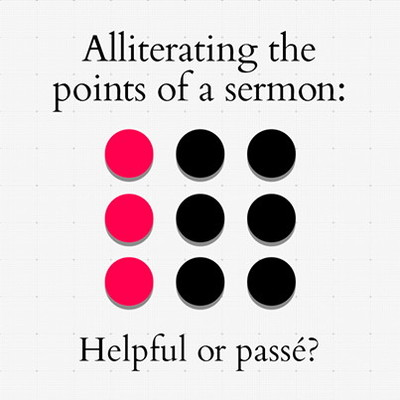The other day on our social media channels, we posted the following question:
Alliteration is, of course, a time-tested rhetorical device which can help listeners remember what was said. Take, for example, Martin Luther King Jr.’s “dream” that his children would one day be judged “not by the color of their skin, but by the content of their character.” The use of alliteration here (and consonance with the “k” in skin) helps to draw our attention to the contrast.
Many notable preachers have used alliteration to draw attention to the main points of their sermons, and in some circles, it has become so common as to be seen by preachers and congregants alike as the prescribed method for constructing a sermon. Of course, like any method, the use of alliteration in preaching can sometimes become stale, artificial, or stilted. One reason we asked whether alliteration is helpful or passé was to gauge whether there is any kind of negative backlash to this time-tested, but sometimes overused, method.
Another reason we asked the question is to gauge how much changing times are affecting preaching methods like this one. As visual forms of communication become ever more prevalent, are techniques like alliteration, which are designed to help people retain what they hear, becoming less effective?
We received a number of interesting responses on Facebook and Twitter, and I’d encourage you to check out those discussions. Most recognized that alliteration can be misused, and some encouraged abandoning the practice altogether. Others still see it as helpful, even fun, and worth the effort to do right. If you’d like to chime in, feel free to join those social media discussions or leave a comment on this post. We’d love to hear what you think.


